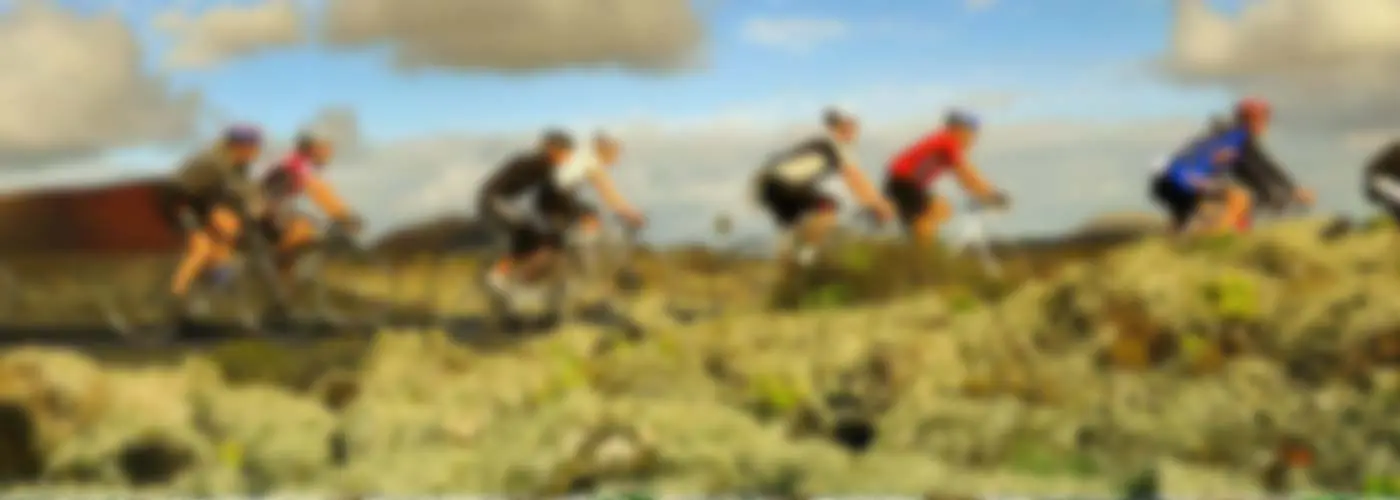If cycling's always something you've wanted to try, former German pro cyclist Jens Voigt has tips for getting on the bike at any age.
Editor's Note: Voigt is sponsored by Fitbit. This piece was created independently and was not paid for by Fitbit.
Focus on Intervals
1 of 11
If you want to become a stronger cyclist, focus on intervals. Riding at the same speed won't help you improve. Training high and recovering low is key. My Fitbit makes it easy to track my heart rate while riding. Ride at a heart rate of 165 to 180 for a few minutes then recover by riding at 110 to 120 beats per minute for twice the time. Changing rhythm gives your body the opportunity to perform and work more efficiently.
Find:
Your Next RideDon't Rely on Just Cycling
2 of 11
Before you go for a ride, factor in time for strength training and stretching. Focus on core muscles, as well as arms and shoulders, so you can improve your performance on the bike and prevent injury.
Find:
Your Next RideNever Give Up
3 of 11
Set goals for yourself and focus on quality over quantity. If you plan to race, give yourself plenty of time to train and don't overdo it. If you feel tired or sore, make sure you are getting the proper amount of rest to recover fully.
Find:
Your Next RideTrack Your Sleep
4 of 11
While you may think that just focusing on your rides is important, gauging how you sleep before a big ride is just as crucial. Sleep is directly correlated to performance and improves your body's ability to recover from tough workouts.
By tracking my sleep with Fitbit and using Sleep Stages, I can see how I slept the night before and alter my workouts accordingly to ensure I'm training effectively and efficiently.
Find:
Your Next RideStay Hydrated
5 of 11
I make sure to log my daily water consumption on my Fitbit. Setting goals and tracking how much water I drink will ensure I am ready to train and feel my best.
Find:
Your Next RideDon't Try to Imitate the Pros
6 of 11
You don't need to be as aero as they are. Stay more upright to begin with. It's easier on your back and your ability to breathe.
If you only want to train twice a week, there is no need for a $10,000 bike. Well, if money is no problem then buy that bike, because they do look beautiful.
Find:
Your Next RideDon't Go Out Alone
7 of 11
Take an experienced friend or a group with you. It helps if people know the roads, the hills, down hills and some of the tricky corners. Your friends also can tell you about your position, your pedal-stroke and if you look efficient and comfortable on your bike.
If you decide to start with clip-in pedals, I strongly recommend that you train on an empty parking lot to start. I have seen many less experienced people crash in front of a red light simply because they panic and forget how to clip out. Plus, crashing in front of a red light goes straight to YouTube, and nobody wants that, right?
Find:
Your Next RideMake Sure to Warm Up Properly
8 of 11
Making sure you're warmed up before starting a training session or race is just as important as your time on the bike. A gradual warmup will prevent less fatigue at higher levels of exercise, allowing your body to fight off that soreness you may otherwise be feeling the next day.
Find:
Your Next RideGive Yourself Time to Recover
9 of 11
Give yourself time to adjust to cycling. If you are feeling sore, take the day off, but keep at it. Focus on monitoring your overall health and fitness while riding, but make sure you consistently ride. Consistency is key at any age.
Find:
Your Next RideGet the Right Equipment
10 of 11
If you want to compete, you want the best possible equipment. Determine your needs for gear ahead of time to cut costs. If it's for fun, maybe design and colors are important to you. If it's for leisure, maybe you want more comfort than speed or aerodynamics.







Discuss This Article